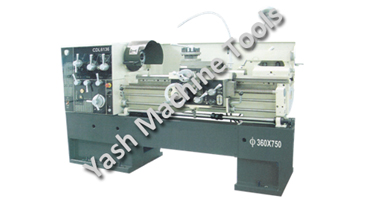How Lathe Machine Manufacturers are Powering the Nation’s Engineering Growth in Canada?
Canada’s engineering sector is a critical component of the nation’s economy, encompassing industries such as aerospace, automotive, heavy machinery and manufacturing. Central to this growth are lathe machines, indispensable tools that enable precise shaping and machining of metal components. The contributions of lathe machine manufacturers in Canada are vital, as they supply a diverse range […]
How CNC Lathe Machines are Transforming Manufacturing in Kenya and Uganda?
The adoption of CNC lathe machines in Kenya and Uganda is revolutionizing manufacturing across various industries. These machines, known for their precision, speed and flexibility, are becoming crucial tools in the production of parts and components that require high accuracy. This article examines how cnc lathe machines are transforming the manufacturing landscape in Kenya and […]
Market Potential for CNC Lathe Machines in South African Countries: Trends & Insights
South Africa is rapidly evolving as a key player in industrial automation, with CNC Lathe Machines playing a crucial role. As industries seek precision, efficiency and automation, the demand for Flat Bed CNC Lathe Machine, Slant Bed CNC Lathe Machine and CNC Milling Machine is rising. With growing investment in manufacturing, mining and metalworking, South […]
Why All Geared Lathe Machines are Gaining Popularity in German Industry?
The German industry is renowned for its precision engineering and high-quality manufacturing. With a strong focus on automation and efficiency, industries in Germany are adopting All Geared Lathe Machines at an increasing rate. These machines offer advanced functionality, durability and enhanced productivity, making them an ideal choice for various machining applications. But why exactly are […]
The Growing Demand for All Geared Lathe Machines in Global Markets
The industrial sector is evolving rapidly and All Geared Lathe Machines are becoming a cornerstone of precision machining worldwide. With their ability to handle diverse operations like knurling, drilling, sanding and cutting, these machines are driving efficiency in multiple industries. From Light Duty Lathe Machines for small-scale tasks to Extra Heavy Duty Lathes for large […]
The Impact of CNC Lathe Machines on Small and Medium Enterprises
CNC lathe machines have fundamentally transformed the way small and medium enterprises (SMEs) operate. The advent of flat bed and slant bed CNC lathe machines has revolutionized machining operations, providing numerous benefits to these businesses. From improved productivity to precision and cost-effectiveness, CNC lathe machines are now an essential part of modern manufacturing. This article […]
Why Lathe Machines Are Essential for Power Plants and Heavy Industries?
Lathe machines have long been an integral part of the manufacturing and machining industries. Their versatility and precision make them crucial tools, particularly in industries that require heavy-duty, high-precision work, such as power plants and heavy industries. These machines are employed to create a wide variety of components, from small parts to large mechanical structures […]
Understanding the Working Principles of a CNC Lathe Machine
CNC (Computer Numerical Control) lathe machines have revolutionized the manufacturing world by offering unparalleled precision, efficiency, and automation in machining operations. These advanced tools are essential in industries ranging from automotive and aerospace to electronics and medical device manufacturing. But what makes a CNC lathe machine tick? In this comprehensive guide, we’ll dive into the […]
Experienced and Top Lathe Machine Manufacturer in India – Yash Machine Tools
When it comes to developing high-quality lathe machines, Yash Machine Tools stands out as one of India’s leading and most trusted manufacturers. With decades of experience and an unwavering commitment to excellence, we have built a stellar reputation for creating world-class lathe machines. From tool rooms to large-scale manufacturing units across Gujarat and beyond, Yash […]
All Geared Lathe Machine: A Comprehensive Overview

The all geared lathe machine is an essential piece of equipment in the field of machining and metalworking. Known for its accuracy, power, and versatility, the all geared lathe machine is widely used in industries ranging from automotive and aerospace to tool manufacturing and general engineering. Its ability to shape, cut, and form different materials […]


